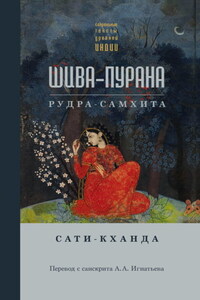It is the thirteenth century and times are tumultuous in the East. The Persian Empire is in chaos and division and corruption are rife amongst the ruling classes. The Mogul armies of Genghis Khan are moving westward, invading and pillaging country after country. People are living in fear and disbelief, having lost faith in their political and religious leaders. The Persians will soon bear witness to one of the worst massacres in history at the hands of the Mogul invaders.
Mowlana Jallaledin Mohamad Rumi is born on 30 September 1207, on the far eastern edge of the Persian Empire in Balkh in modern-day Afghanistan. His father, Baha-e Valad, is a renowned religious leader with a great following. A descendant of a long line of theologians, teachers, scholars and Islamic jurists, he eventually falls into disfavor with the brutal local ruler. Fearing the impending Mogul invasion, Rumi’s father gathers his family and followers and leaves his homeland. After years of traveling during the mayhem of war and destruction they eventually arrive in Konya, in the province of Rum in present-day Turkey. Konya, melting pot of many cultures, religions and nationalities, is also a center of science, literature and learning. Rumi, now in his teens, is nourished in an atmosphere of love, stability and intellectual richness. Meanwhile the Turkish leader of the province offers Baha-e Valad his own school and the family settles permanently in Konya. Years later, after his father’s death, the young erudite Rumi assumes the teaching post in the same school, not only leading his father’s students but gaining thousands more on his own merit.
In 1244 Rumi, now thirty-six and an established scholar and religious leader, encounters Shams of Tabriz, a man in his sixties who is to shake the very foundations of Rumi’s life. Shams’ background is unclear, his appearance is shabby and his manner is rough and uncompromising. A dervish, or wandering mystic, Shams is a highly advanced Sufi walking the spiritual path of Love. Rumi recognizes in Shams a great master and, from their first encounter, becomes devoted to him. The meeting of these two men is like the meeting of two mighty rivers. Highly accomplished spiritual beings, each man recognizes in the other the confidant he has been seeking. Shams, searching all his life for someone who can truly understand him and receive his knowledge, finally finds that person in Rumi. They spend hours secluded from others immersed in meditation and spiritual talk. Shams encourages Rumi to resign from teaching, discard all his beloved books and refuse to see any of his students and followers. Instead he takes him on the path to the Love of God through insight, music, dance, and ultimately, poetry. This of course raises many eyebrows, and jealousies erupt among Rumi’s dedicated followers. They regard Shams as a scruffy old man unworthy of the company of their master and who has distanced him from them. Eventually their petty behavior leaves Shams no option but to abandon the side of his adored friend without leaving a trace.
Hearing the news Rumi goes into deep seclusion and refuses to see anyone. The pain of separation from his beloved friend provokes him to begin expressing his longing and his suffering in poetry for the first time. His devotees eventually become exasperated and admit that it is better to have Shams back than never to see Rumi again. After months of searching Rumi finally receives a letter from Shams who is now in Damascus. Rumi sends his older son, Sultan Valad, and many followers to implore Shams to come back to Konya. The moment Rumi sees Shams’ face again he regains his composure. They resume their discourse and immerse themselves in music and sema, a whirling spiritual dance. For a while Shams and Rumi are spared from the jealous eyes of the devotees. Rumi even manages to convince Shams to marry a young girl named Kimia, who is a member of Rumi’s household. Shams indeed falls in love with Kimia but it is not meant to be. Only a year later Kimia dies following sudden illness. Overwhelmed with grief, and his discontent with the behavior of people around Rumi, Shams disappears again – this time for good.
There are different versions of what happens to Shams. Some say Rumi’s followers, assisted by his younger son Allaedin, murder Shams and toss his body down a well. Others say Shams had realized the time for him to go had arrived and that if he stayed he would only curtail Rumi’s spiritual growth. No one can be certain. Perhaps it really does not matter. The truth is that Shams appears in Rumi’s life at the right moment and turns an educated, intelligent religious leader into an enlightened being. He shines in Rumi’s life like the sun that he is, and disappears just as suddenly as he walked into it.








